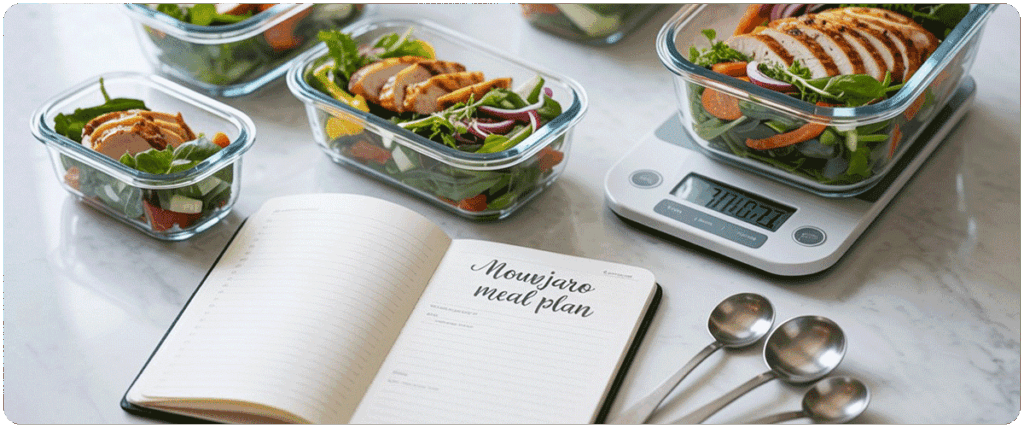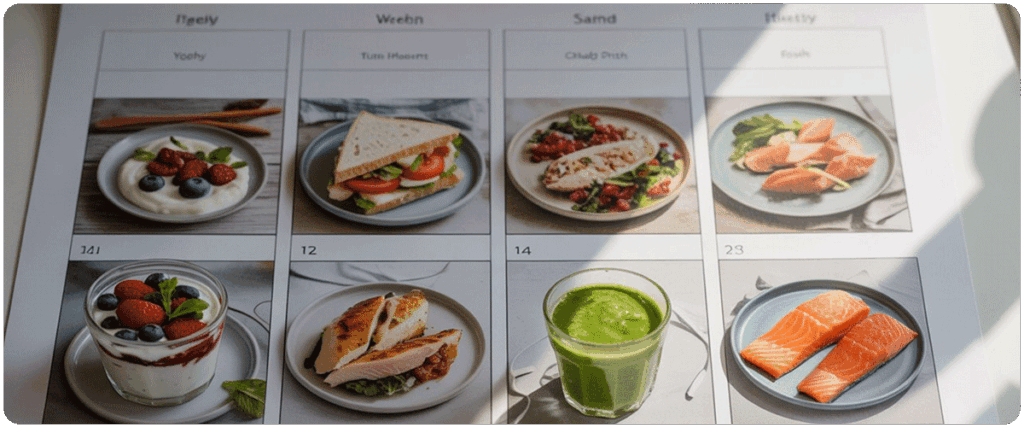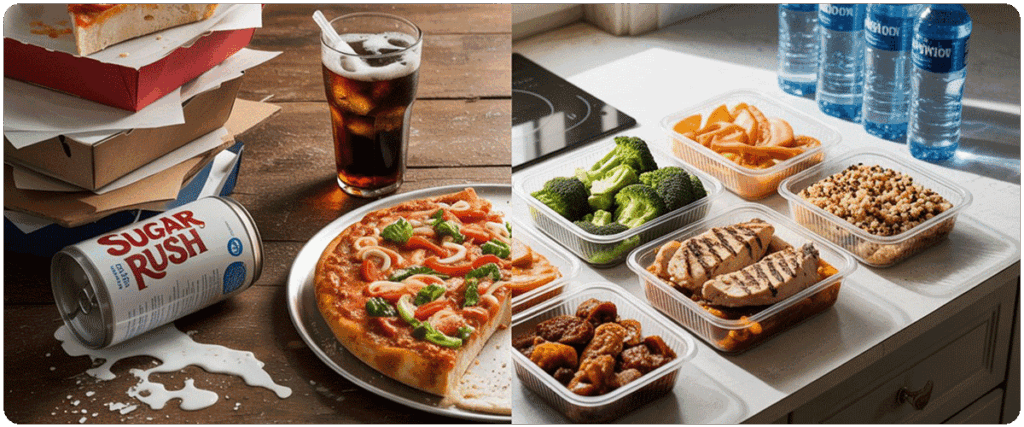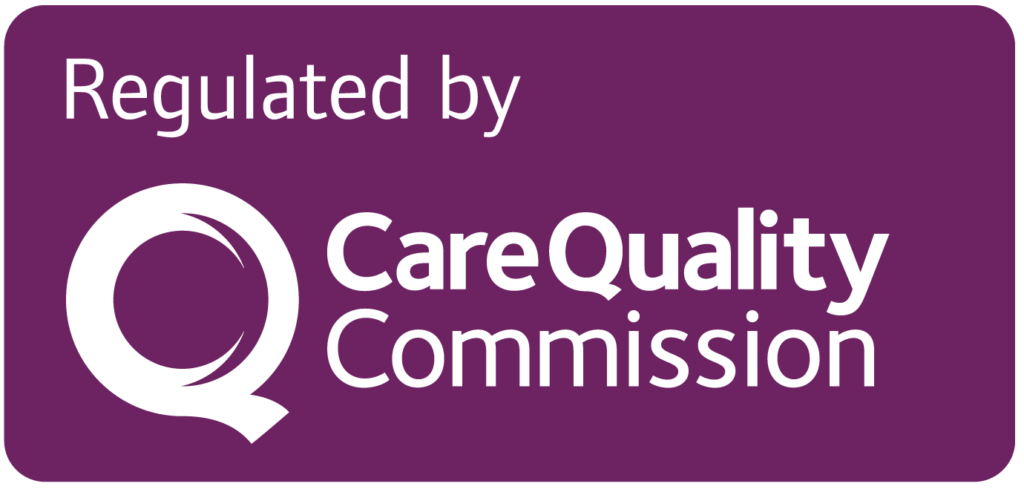Table of Contents
ToggleWhat Actually Works (And What Doesn’t)
I’m Nashreen, and I run the weight management service at Hayshine Pharmacy in Welling, Kent. Working under our superintendent pharmacist Matthew Clent, I’ve supported hundreds of people through their individual health and lifestyle journeys.
Honestly, the food side of things trips people up more than anything else. You would think eating less would be simple, but it turns out there is quite a bit more to it.
This is not going to be one of those perfect meal plan guides with Instagram worthy photos. It is more like what I would tell you if we were having coffee and you asked “so what do I actually eat when I am trying to manage my weight properly?”

How Weight Management Really Works (The Bit That Matters)
Right, so the important thing to understand is that successful weight management is not just about willpower. A big part of it comes down to how your body signals hunger and satisfaction. When those signals are out of sync, it is easy to eat past the point of comfort without even realising.
When people begin making changes to their eating habits, the shift can feel surprisingly intense. Some find that within a couple of weeks their appetite drops so much that they have to remind themselves to eat. Others feel full much faster than they are used to and can only manage a few bites before feeling like they have had enough.

Why What You Eat Still Matters
Nobody warns you about this: just because you are eating less does not mean you are automatically eating well. I have seen people living off biscuits and crisps simply because those are the only things that do not make them feel sick.
I always say the goal is not just weight loss, it is feeling good while you lose weight. Proper nutrition helps with energy levels (which can tank if you are barely eating), prevents that awful hungry and irritable feeling when your appetite changes from day to day, and honestly just makes the whole process more pleasant.
Also, and this might sound obvious, but you want to keep muscle while losing fat. That requires protein, which requires planning when you are only eating tiny portions.

What Actually Works: The Practical Stuff
After watching loads of people go through this, I’ve noticed what actually works:
Drink water like it’s your job.
Seriously, aim for 6-8 glasses daily. The medication works better when you’re properly hydrated, and it helps with some of the digestive side effects too.
Don’t drink with meals.
This one sounds random, but try not to drink anything 30 minutes before or after eating. It helps the food sit better and makes you feel satisfied with smaller portions.
Eat little and often.
Three tiny meals often work better than trying to force down “proper” meals when you’re not hungry.
Protein with everything.
Even if it’s just a boiled egg or some Greek yogurt. Your body needs it to maintain muscle, and protein keeps you feeling fuller longer.
Fibre is your friend.
Vegetables, beans, that sort of thing. Helps with digestion and makes you feel satisfied.
Go easy on fatty and sugary stuff.
Not because they’re “bad,” but because they can cause blood sugar spikes that make you feel hungry again quickly. Plus fatty foods can make nausea worse.
Chew properly.
Sounds silly, but when you’re eating tiny amounts, you want your body to actually absorb the nutrients.
Frank said:
“Very helpful friendly staff. Explained everything clearly and always available with advice. The regular check ins really helped me stay on track.”
Another patient mentioned:
“The meal planning support I received made a huge difference. I actually enjoy my food more now and feel more in control of my routine.”
Shopping List: What to Actually Buy
What I suggest keeping in your kitchen:
Proteins that don’t require much effort: Chicken breast (pre-cooked strips save time), fish (frozen fillets are fine), eggs (hard-boiled ones keep for days), Greek yogurt, tofu if you’re into that.
Carbs that won’t spike your blood sugar: Brown rice (the microwave packets are handy), quinoa, oats, wholemeal bread.
Vegetables that are actually nice to eat: Baby spinach (goes in everything), cherry tomatoes, peppers, cucumber, frozen mixed veg (honestly, just as good as fresh).
Fruits that fill you up: Apples, berries (frozen ones work for smoothies), bananas.
Healthy fats (small amounts): Avocados, nuts, seeds.
Things that make food taste good: Herbs and spices, lemon juice, a decent olive oil
What to Avoid (Or at Least Go Easy On)
Fizzy drinks can make bloating worse, which is already a common side effect.
Processed ready meals are usually high in salt and additives that can mess with your digestion.
Anything deep-fried can trigger nausea, and you’re trying to retrain your taste buds anyway.
Too much alcohol can interfere with the medication and makes some people feel awful the next day.
Comprehensive Meal Ideas For Successful Weight Management

Breakfast (When You Can Face It)
Mornings can be tough when your appetite is low. Some people feel queasy, others just are not hungry. These tend to work:
Greek yogurt with berries (easy on the stomach and protein rich), scrambled eggs with spinach (soft, comforting and nutritious), overnight oats in a small portion (you can prep it when you are feeling motivated), protein smoothie (sometimes drinking calories is easier than eating them).

Lunch Options
By lunchtime, most people can manage a bit more:
Chicken salad with pre-cooked chicken strips makes this dead easy. Soup, particularly homemade vegetable soup with some lentils thrown in. Quinoa bowl with whatever vegetables you have kicking about. Tuna and salad is simple, high protein, takes two minutes.
Dinner Ideas
Evening meals when you’re not massively hungry:
Baked fish with vegetables (chuck it all in the oven, minimal effort). Stir-fry with whatever veg needs using up plus some protein. Small portion of chili (make a big batch and freeze portions). Grilled chicken with roasted veg is simple, filling, tasty.
Snacks (For When You Need Something Small)
Apple with peanut butter satisfies sweet cravings. Carrot sticks with hummus are crunchy and satisfying. Small handful of nuts provides portable protein. Rice cake with cottage cheese is surprisingly filling.
7 Day Meal Plan for People Managing Their Appetite
Eating Out and Social Situations

One thing nobody tells you about weight management is how it affects eating out. Suddenly you cannot finish a starter, let alone a main course, and people start asking if you are feeling alright.
Restaurant strategies that work: Look at menus online beforehand and identify lighter options. Many restaurants now have smaller portion sizes or light menus. Do not be shy about asking for a starter as your main course, most restaurants are happy to accommodate this.
Share dishes with friends or family. This works particularly well with tapas, mezze, or Asian cuisine where sharing is normal. You get to try different flavours without committing to a whole plate.
Ask for dressings and sauces on the side. Restaurant portions of these are usually massive and can trigger nausea if you are not used to rich foods.
Social eating tips: Eat something small before you go out if you are worried about not eating enough in front of others. A small snack beforehand means you can focus on the social aspect rather than worrying about food.
Be honest with close friends and family about your situation. Most people are understanding and supportive once they know you are working on your health.
Focus on the company, not the food. Social eating is about the people you are with, not finishing everything on your plate.
Travel and eating away from home: Pack small snacks for travel days. Airports and service stations are not known for their healthy, portion appropriate options. Small packets of nuts, protein bars, or fruit are your friends.
Research restaurants near your destination beforehand. Having a few backup options means you are not wandering around looking for somewhere suitable when you are already hungry and tired.
Consider self catering accommodation if you are staying somewhere for more than a night or two. Having access to a fridge and basic cooking facilities gives you more control over your eating habits and food choices.

Troubleshooting Common Eating Problems
When nothing sounds appealing: This is really common, especially in the first few weeks. Keep simple, bland foods handy such as plain crackers, toast, bananas, and rice cakes. Sometimes you need to eat for fuel rather than pleasure.
Try cold foods when hot foods put you off. Yogurt, smoothies, cold soup, or salads might be more appealing than cooked meals.
When you feel too full too quickly: Slow down your eating even more. Put your fork down between every bite and really chew your food. Eat the protein first, then vegetables, then carbohydrates if you still have room.
Consider liquid calories if solid food is too much. Smoothies, protein shakes, or soup might be easier to manage than solid meals.
When you are not losing weight despite eating less: Make sure you are still getting enough nutrition. Eating too little can slow your metabolism and energy levels. Speaking with a registered dietitian can help you understand your calorie needs and create a balanced plan.

Check you are getting enough protein. When you are eating tiny portions, it is easy to skip protein without realising it, which can affect muscle mass and overall energy.
When side effects affect your eating: Nausea usually improves with time, but ginger can help in the meantime. Try ginger tea, crystallised ginger, or ginger biscuits.
If you are experiencing constipation, increase your fibre intake gradually and make sure you are drinking enough water. Prunes, figs, and high fibre cereals can help.
For heartburn or acid reflux, avoid spicy, acidic, or very fatty foods. Eat smaller, more frequent meals and do not lie down immediately after eating.
Something I always explain to new patients: your relationship with food will change over time.
First month: You might struggle to eat anything. Focus on gentle, bland foods and do not worry about perfect nutrition, just make sure you are getting enough calories.
Months 2 to 3: Appetite might return slightly. This is when you can start experimenting with more variety and slightly larger portions.
Month 4 onwards: You are looking at establishing patterns you can maintain long term. Less about “special diet foods” and more about sustainable healthy eating.
Common Questions People Actually Ask
Not banned, but most people find they feel rough even after small amounts. If you do drink, see how your body responds first.
The idea is to develop better habits that stick. But you’re not signing up for a lifetime of lettuce leaves.
Chat with Nashreen – she can adapt recommendations to work with whatever you need to avoid.
Everyone’s different. Most people notice something within a few weeks, but combining with better food choices usually speeds things up.
Of course. Life’s too short to never have chocolate. Just maybe not every day.
Getting Started
Look, changing how you eat during weight management can feel overwhelming. You do not have to be perfect from day one.
Start with one or two changes, maybe adding protein to breakfast or drinking more water. Build from there as you get used to how your appetite and digestion change.
The most important thing I tell all my patients is this: these meal ideas are suggestions, not rules. Some days you might only manage half an apple and some crackers, and that is fine. Other days you might feel like eating more normally. Listen to your body and adjust accordingly.
If you want proper guidance tailored to your situation, I run weight loss consultations at Hayshine Pharmacy. I’m pretty good at helping people navigate the practical side of this stuff – the things the medication leaflet doesn’t tell you.
Matthew Clent is our superintendent pharmacist, but I am the one who really knows the ins and outs of making this work in real life. No judgment, just practical advice from someone who has helped hundreds of people through this process.









